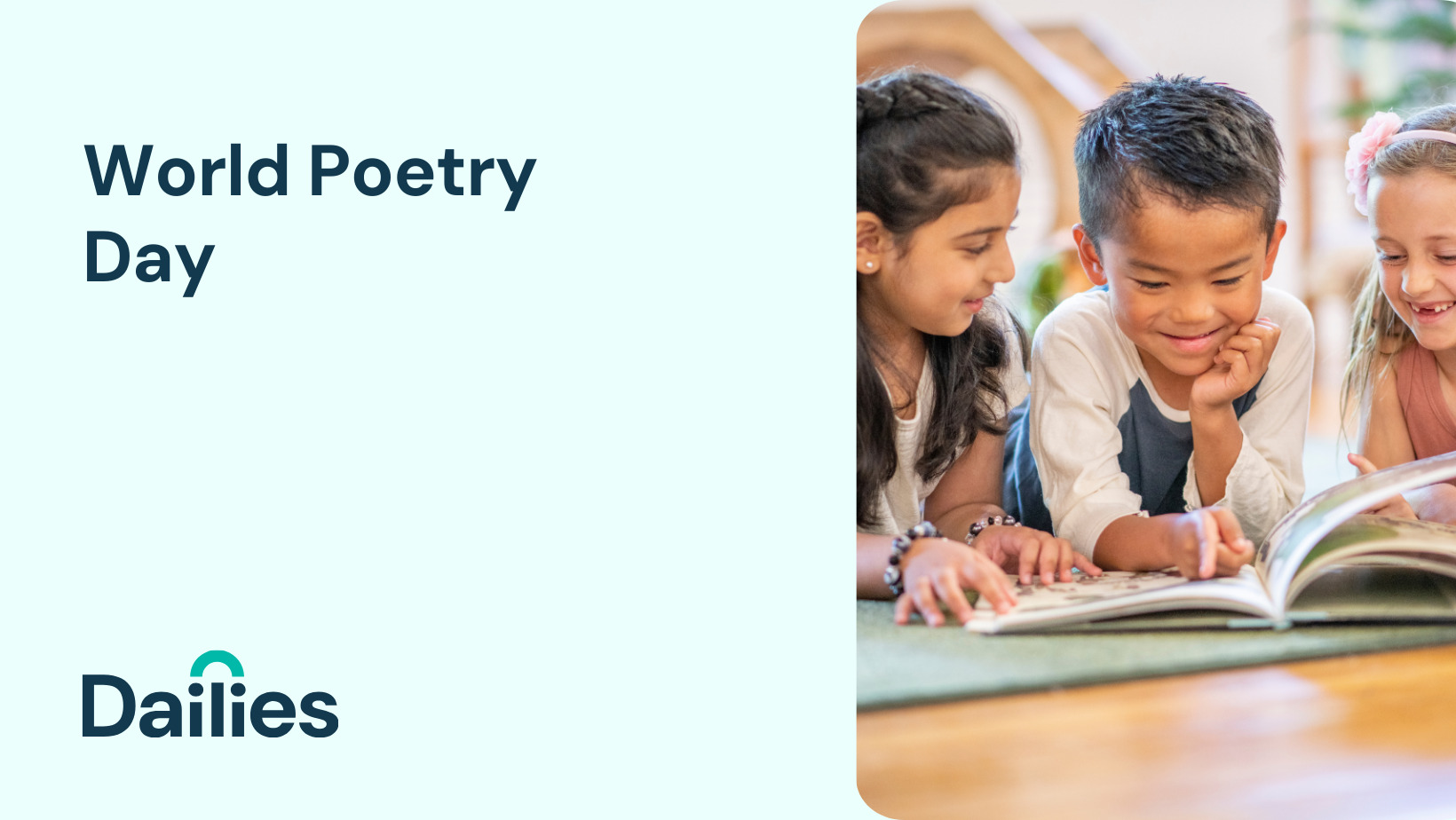Written by
Somer Neziri Read all posts by this author
Kids and Poetry
In this short article, I will propose three educational elements that poetry can bring to your students. I will also provide practical examples how those elements can show up in the classroom, or in a homeschool environment. Of course, for purposes of this article, it is my interest to focus on three elements that I find important. What holds true as even more exciting is that we are not bound by only three elements.
I will keep playing with this and expanding my thoughts, and I hope you, the reader, do as well.
But alas, for our time here, I will begin by honoring my chosen; the three elements that poetry can bring to your students.
Learning of the Past
Creativity and Expression
Self-Reflection
Learning of the Past
The world of poetry is full of wonders to learn. Sometimes it takes place in the form of honoring the structure of a Haiku or Sonnet. I find that it is these structures that allow my children and students to find comfort in exploring something of the past. To play and mold their thoughts along the container of the poem structure. To become familiar with what makes a poem. To then allow oneself to become free of the structure and then to break it apart and play. This unlocks the path to the third level which is creativity and expression. To quote a similar thought, “Learn the rules like a pro, so you can break them like an artist.”― Pablo Picasso
In practical terms, lessons and assignments can look like this:
- Coloring historical timelines, authors, and poets, of the past
- A research project incorporating poetry of the past
- A historical collage created by the students using words
Creativity and Expression
Poetry allows the writer to unravel clouds of creativity and seas of expression, at times a poem can unlock a sleeping giant, a friendly beast, or a brave unicorn that needs to let their heart speak. In this realm, all is open to possibilities.This realm is fun, freeing, playful, and limitless.
In practical terms, lessons and assignments can look like this:
- Poetry Assignments
- Performance Poetry
- Silent Poetry
- Poetry through different art mediums; such as and never limited to, video, clay, a play, watercolor, colored pencils etc.
Self Reflection
Following a structure and formula through creative means; whether bound by it or free can lead to self-reflection. You get to arrive with yourself to ask yourself questions on your emotions and logic to name only a few. You can explore the caves of yourself as deep or surface level as you would like to go.
In practical terms, lessons and assignments can look like this:
- Poetry Journals
- Meditation and Isolated Quiet Time
- Identity Expression and Exploration
- Finding inspiration in the world around us; for example, micro (in the classroom) macro (learning about other cultures)
- Exit Slips
- Letters to Future Selves
In this short time together I hope I have inspired you with ways in which poetry can be brought into the classroom and three of the many, many, elements it can inspire in our students.
World Poetry Day is to celebrate literature, poets, and poetry that of the past and of the present, so it is my honor to be witness and help facilitate being a part of what our students and children see to create.

